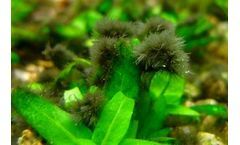Algae Control Articles & Analysis: Older
6 articles found
Cyanotoxins are toxic substances produced by cyanobacteria, or blue-green algae, which can proliferate in water bodies under conditions like high nutrient levels and warm temperatures. There are over 1,118 different cyanotoxins identified globally in freshwater environments across 66 countries, illustrating the widespread nature of this ...
Physiological Injury of Aquatic Plants 1. Insufficient Light During the growth, due to insufficient light, the photosynthetic intensity of aquatic plants will be reduced, the normal growth and development will also be affected. For example, red water plants such as Ammania gracilis and Rotala macranda, due to insufficient light, the anthocyanins in the leaves will decrease; while ...
Estimated reading period: 3 minute Article words: 482 How to get rid of black hair algae? also known as black brush algae, is one of the most common algae in the planted tank, and one of the most difficult algae to remove in the planted tank. It has certain damage to aquatic plants and will affect the beauty of the entire planted tank. The reason why there are black hair algae in a planted ...
In May 2017, a Consortium, coordinated by LG Sonic, started the LiceSonic research project in order to develop a smart and environmentally friendly method to control sea lice in open finfish production. The research project has now advanced to finalizing integration between the monitoring software and hardware. In May 2017, a Consortium, coordinated by LG Sonic, started the LiceSonic research ...
Controlling algae with low-power ultrasound is a well-established technology that has been in existence for many years. ...
This will enhance the specificity and selectivity of the ultrasonic treatment. The algae are treated with ultrasonic sound waves set in precise frequencies that directly target the cellular structure of the algae. The amount of algae in the water is reduced and controlled in an efficient, cost-effective manner, and further growth ...




